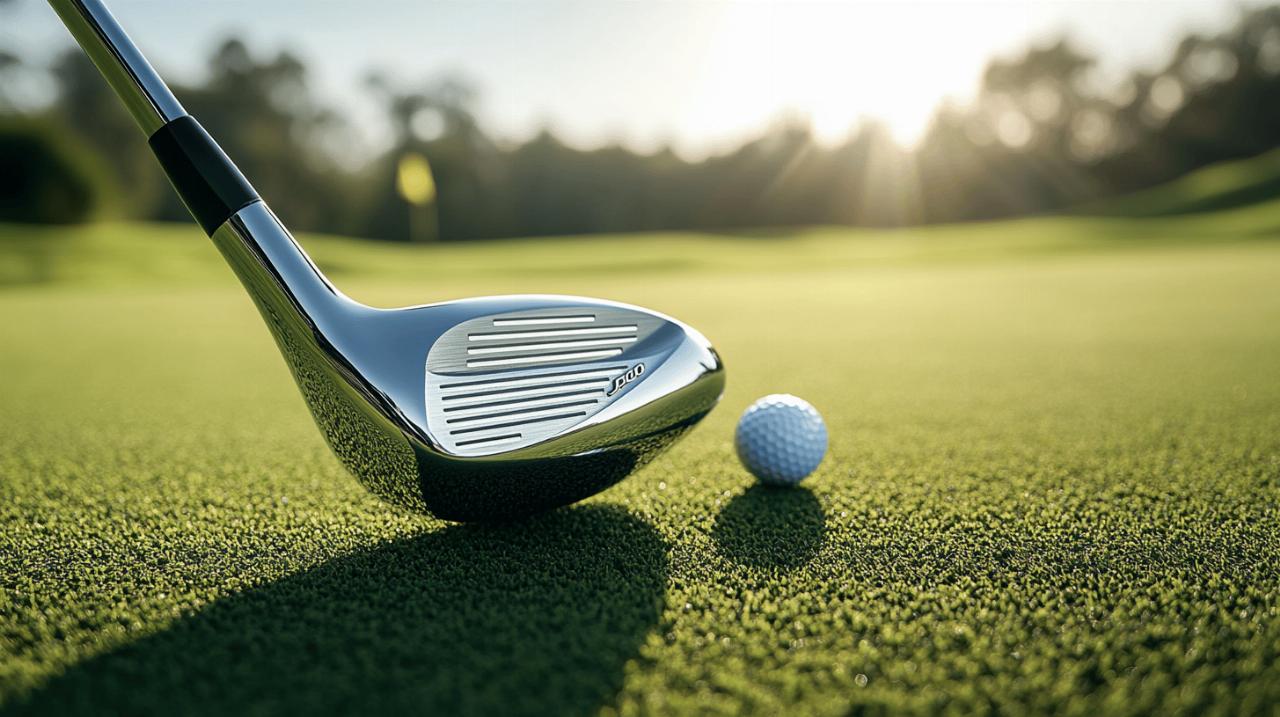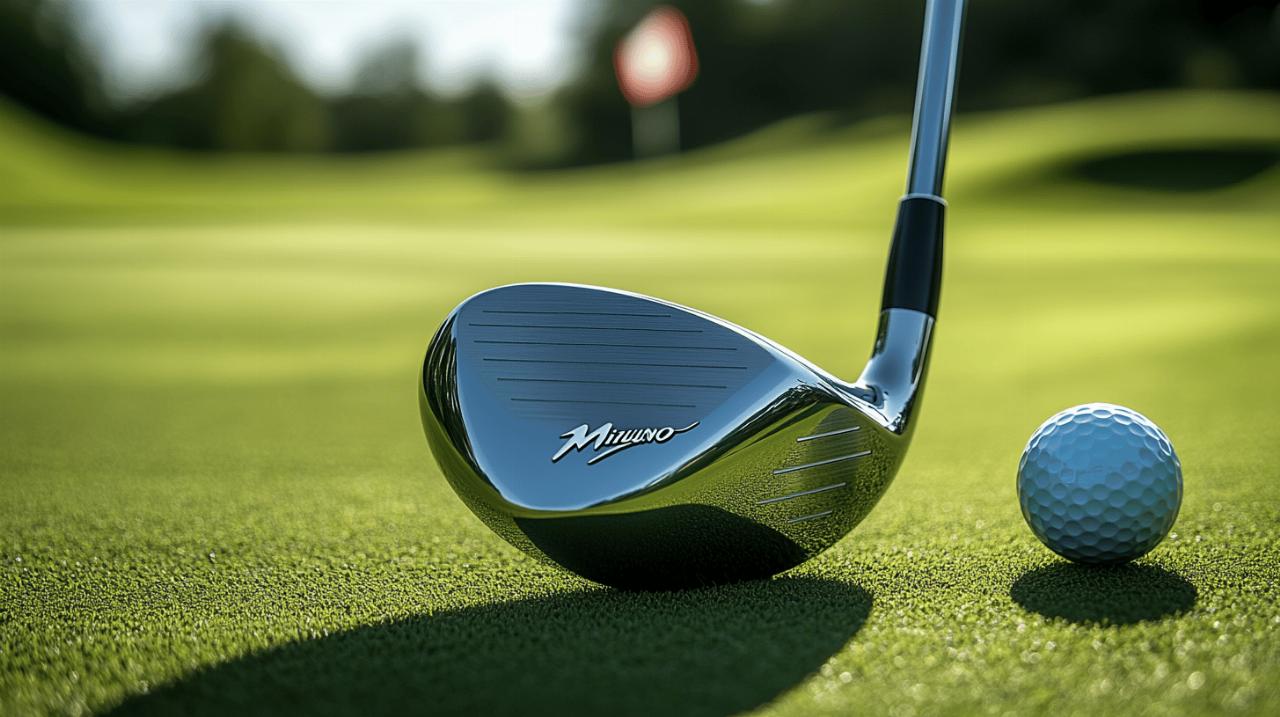Aesthetic Excellence in the TEST of Mizuno’s JPX 900 Hot Metal Irons: How Looks Meet Performance
When Mizuno unveiled the JPX 900 Hot Metal irons in late 2016, they presented golfers with a compelling proposition: a club that marries genuine distance-producing technology with the visual refinement typically reserved for more traditional offerings. For players seeking a game-improvement iron that doesn't announce its purpose quite so loudly, these clubs represent a thoughtful compromise between modern performance demands and classic aesthetic sensibilities. The question many golfers face is whether this balance truly delivers on both fronts or if compromises become apparent under scrutiny.
Visual Appeal and Design Philosophy Behind the JPX 900 Hot Metal
The modern aesthetic of mizuno's game-improvement series
Mizuno has long maintained a reputation for producing some of the most visually appealing clubs in golf, and the JPX 900 Hot Metal series demonstrates the company's commitment to extending that philosophy even into the super game improvement category. Rather than opting for the oversized, bulbous profiles that often characterise distance-oriented irons, these clubs feature a more refined topline and slightly more compact footprint than many competitors. The design team clearly recognised that modern golfers want performance without sacrificing the confidence that comes from looking down at an attractive clubhead. The brushed satin finish catches the light beautifully and resists glare during sunny rounds, whilst the relatively thin topline prevents the clubs from appearing overly chunky despite their forgiving construction.
How the Clubhead Shape Inspires Confidence at Address
The address position reveals careful attention to proportions that matter to discerning golfers. Whilst these irons certainly feature more offset than a blade or player's distance iron, the amount remains modest enough to avoid an exaggerated appearance that can undermine confidence for improving players. The sole width strikes a sensible balance, providing sufficient bounce for varied turf conditions without creating an agricultural look that suggests the clubs are designed solely for remedial purposes. This thoughtful shaping proves particularly important for golfers transitioning from more traditional designs, as the visual adjustment becomes far less jarring than with some competing models. The overall impression at address is one of capability rather than compensation, which can positively influence both commitment and swing quality.
Performance characteristics that match the premium appearance
Distance Gains and Ball Flight Consistency Across the Set
Testing conducted by Plugged In Golf's Matt Saternus revealed that the JPX 900 Hot Metal irons deliver on their distance promises without resorting to gimmickry. Smash factors consistently exceeding 1.4 demonstrated that the face technology genuinely produces elevated ball speeds, translating directly into meaningful yardage gains compared to more traditional iron designs. What proves particularly impressive is how this distance capability extends across the entire set rather than being confined to the long irons where many golfers struggle. The high ball flight generated throughout the lineup assists with stopping power on approach shots, addressing a common concern with distance-oriented irons that sometimes produce penetrating trajectories difficult to control on firm greens. This combination of added length and appropriate descent angle makes the clubs genuinely useful for course management rather than simply satisfying range vanity.
Forgiveness technology hidden within the sleek profile
The true achievement of these irons becomes apparent when strikes wander from the sweet spot, as maintaining respectable distance and direction on off-centre contact represents the primary purpose of the game-improvement category. The engineering behind the JPX 900 Hot Metal incorporates strategic mass distribution that expands the effective hitting area without requiring the exaggerated dimensions that compromise aesthetics. Testing revealed that even toe and heel strikes retained impressive smash factors, with ball speeds degrading far less dramatically than traditional cavity-back designs would suggest. This tolerance proves invaluable during actual rounds when swing consistency inevitably fluctuates due to fatigue, tension, or difficult lies. The forgiveness technology operates subtly enough that golfers receive helpful assistance without feeling entirely disconnected from the quality of their strikes, maintaining an important feedback loop for continued improvement.
Feel and Feedback: Where Aesthetics Translate to Sensation
Strike quality and sound profile during testing
 Mizuno's heritage in producing beautifully soft-feeling forged irons creates high expectations even when evaluating a cast distance iron, and the Hot Metal series manages to exceed reasonable anticipations for this category. Whilst the impact sensation doesn't quite match the buttery compression of a forged grain-flow blade, it certainly surpasses the harsh, clicky feel that characterises many competing game-improvement models. The sound at impact registers as pleasantly muted rather than producing the loud ping that can prove embarrassing on crowded practice facilities. This acoustic refinement matters more than many golfers initially recognise, as sound profoundly influences our perception of quality and can either reinforce or undermine confidence during competitive rounds. Pure strikes generate a satisfying, slightly lower-pitched tone that communicates solid contact without excessive noise.
Mizuno's heritage in producing beautifully soft-feeling forged irons creates high expectations even when evaluating a cast distance iron, and the Hot Metal series manages to exceed reasonable anticipations for this category. Whilst the impact sensation doesn't quite match the buttery compression of a forged grain-flow blade, it certainly surpasses the harsh, clicky feel that characterises many competing game-improvement models. The sound at impact registers as pleasantly muted rather than producing the loud ping that can prove embarrassing on crowded practice facilities. This acoustic refinement matters more than many golfers initially recognise, as sound profoundly influences our perception of quality and can either reinforce or undermine confidence during competitive rounds. Pure strikes generate a satisfying, slightly lower-pitched tone that communicates solid contact without excessive noise.
Comparing tactile response to traditional mizuno forged irons
For golfers familiar with Mizuno's legendary MP series or even the more accessible JPX forged offerings, the Hot Metal naturally invites comparison regarding feel and feedback. The tactile difference becomes apparent immediately, with the forged clubs providing noticeably more granular information about strike location and quality through the hands and forearms. However, this comparison somewhat misses the point, as the target audiences for these respective product lines differ considerably in both skill level and priorities. The Hot Metal irons deliver sufficient feedback to help golfers understand their contact patterns whilst buffering the harsh vibrations that can prove uncomfortable or even painful for players with slower swing speeds or joint sensitivity. This balanced approach serves the needs of improving golfers far better than either extreme of excessive feedback or complete numbness would achieve.
Practical Considerations for Fitting the JPX 900 Hot Metal Into Your Bag
Shaft Selection and Custom Fitting for Optimal Results
Extracting maximum value from these irons requires attention to shaft selection, as even the most forgiving clubhead can underperform when paired with an inappropriate shaft profile. The standard offerings suit a relatively wide range of swing characteristics, but golfers would benefit substantially from a proper fitting session to identify whether lighter or heavier options, different flex profiles, or alternative kick points might optimise launch conditions and dispersion patterns. The approximately 740-pound price point for a set positions these irons as a meaningful investment that justifies the additional time and modest expense of custom fitting. Players with more aggressive transition moves might prefer slightly stiffer profiles to prevent excessive toe closure, whilst smoother swingers could benefit from added flex to help generate adequate clubhead speed through impact. The shaft truly becomes the engine that drives performance, and selecting wisely pays dividends over the clubs' lifespan.
Complementing the Set with Appropriate Wedges and Long Irons
Building a cohesive set requires thoughtful consideration of how the JPX 900 Hot Metal irons integrate with scoring clubs at both ends of the bag. The strong lofts that contribute to the impressive distance capabilities mean that traditional pitching wedge lofts sit considerably stronger than vintage equivalents, creating potential gapping challenges with conventional 52, 56, and 60-degree wedges. Many golfers discover they need to adjust their wedge selections accordingly, perhaps opting for a gap wedge closer to 48 or 50 degrees to maintain appropriate spacing. At the long end, the forgiveness built into the four and five irons often proves sufficient for mid-handicappers to retain these clubs rather than substituting hybrids, though this remains a matter of personal preference and swing characteristics. Testing various combinations during a fitting session helps identify the configuration that provides the most versatile shot-making capability across all distances and situations encountered during typical rounds.
